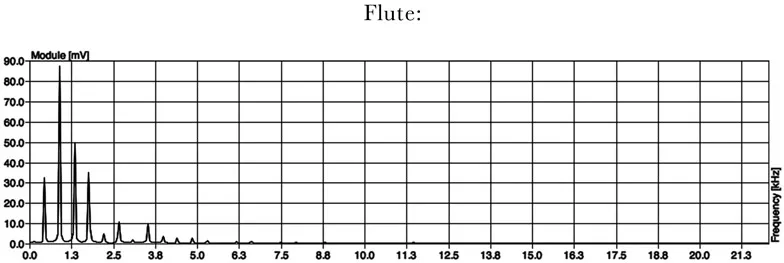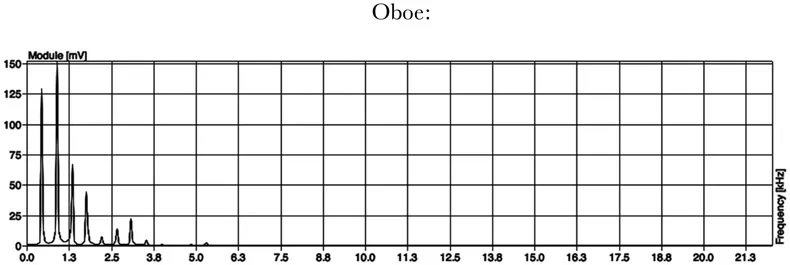
eBook - ePub
Contemporary Orchestration
A Practical Guide to Instruments, Ensembles, and Musicians
This is a test
- 484 pages
- English
- ePUB (mobile friendly)
- Available on iOS & Android
eBook - ePub
Book details
Book preview
Table of contents
Citations
About This Book
Contemporary Orchestration: A Practical Guide to Instruments, Ensembles, and Musicians teaches students how to orchestrate for a wide variety of instruments, ensembles, and genres, while preparing them for various real-world professional settings ranging from the concert hall to the recording studio. Unlike most orchestration texts, it includes coverage of contemporary instruments and ensembles alongside traditional orchestra and chamber ensembles.
Features
-
- Practical considerations: Practical suggestions for choosing a work to orchestrate, and what to avoid when writing for each instrument.
-
- Pedagogical features
-
-
- In the Profession: Professional courtesies, considerations and expectations.
-
- Building the Score: Step-by-step construction of an orchestration.
-
- Scoring Examples: Multiple scoring examples for each instrument.
-
- Exercises: Analyzing, problem solving, and creating orchestration solutions.
-
- Critical Thinking: Alternate approaches and solutions.
Frequently asked questions
At the moment all of our mobile-responsive ePub books are available to download via the app. Most of our PDFs are also available to download and we're working on making the final remaining ones downloadable now. Learn more here.
Both plans give you full access to the library and all of Perlego’s features. The only differences are the price and subscription period: With the annual plan you’ll save around 30% compared to 12 months on the monthly plan.
We are an online textbook subscription service, where you can get access to an entire online library for less than the price of a single book per month. With over 1 million books across 1000+ topics, we’ve got you covered! Learn more here.
Look out for the read-aloud symbol on your next book to see if you can listen to it. The read-aloud tool reads text aloud for you, highlighting the text as it is being read. You can pause it, speed it up and slow it down. Learn more here.
Yes, you can access Contemporary Orchestration by R.J. Miller in PDF and/or ePUB format, as well as other popular books in Media & Performing Arts & Music. We have over one million books available in our catalogue for you to explore.
Information
1
Preliminary Considerations
An intimate understanding of the potential, the complexities and the response to stimuli of one’s chosen medium is the foundation of artistic expression. For those whose art is music, the chosen medium of expression is sound. As such, an awareness of the characteristics of sound affords one the opportunity to manipulate these attributes to one’s benefit. A skilled orchestrator is mindful of the acoustical implications of every note in the score.
The Physics of Sound
Acoustics is the science of sound and acoustical physics is the mathematical laws governing the properties, production and manipulation of sound. As such, acoustical physics is the scientific basis of music. It both governs and explains the fundamental elements of music, namely:
- The nature of musical sound.
- The overtone series.
- The construction and function of intervals.
- The physical properties of the sound-producing media.
A musical sound is generated by the vibration of an elastic body (something capable of movement), such as a stretched string (string family, harp, selected keyboard instruments), a metal bar or disk (pitched percussion, tuning fork), or an enclosed column of air (wind instruments). A simple vibration is characterized by its frequency (the number of vibrations, or cycles per second, expressed as hertz (Hz)) and its amplitude (the intensity of its vibration, i.e. the height and depth of cycle, as in the movement of a plucked string). These two characteristics are directly related to two basic properties of the resulting sound: pitch and amplitude.
The greater the frequency, the higher the pitch.
The greater the amplitude, the louder the sound.
Utilizing acoustical properties advantageous to the overall resonance of one’s work, while avoiding acoustical properties detrimental to the work, is the goal of every skilled composer, orchestrator and arranger. An intimate understanding of these acoustical properties is critical to achieving that goal.
The Overtone Series
An overtone is an acoustic effect produced by a vibration (tone). Every tone generates a series of ascending, acoustically generated sympathetic vibrations. To the untrained ear, these sympathetic vibrations are not heard distinctly because their intensity (amplitude) is much less than that of the fundamental. Nevertheless, they are extremely important, since they account for the different tone colors (timbre) produced when the same pitch is played on different instruments. (Note: Trained musicians have little difficulty hearing at least some of these overtones.)

The lowest tone represented above is the fundamental (or first partial). This is the frequency identified by the ear as the pitch of the musical tone. The frequencies of the overtones (upper partials) are multiples of the frequency of the fundamental. This mathematical relationship is governed by specific laws of acoustical physics (some of which were discovered by the Greek philosopher and mathematician Pythagoras), and most commonly expressed as ratios. The intervallic relationships between partials are exactly the same for any given fundamental.
For a given tone, with a frequency of 440 Hz, the frequency of the tone one octave higher in pitch is 880 Hz. Thus, the ratio of these two tones constituting an interval of an octave is 2:1. The ratio of a given interval is calculated based upon the relationship of the partials at the first occurrence of the interval in the overtone series. Calculating the applicable intervallic relationships contained within a major scale would result in the following set of ratios:

The first occurrence of the interval of a major 2nd resulting in the second note of the ascending major scale is between partials 8 and 9. Since the ratio is representing an increase in frequency it is expressed as 9:8.

The first occurrence of the interval of a major 3rd is between partials 4 and 5, represented by the ratio 5:4.

The first occurrence of the interval of a perfect 4th is between partials 3 and 4, represented by the ratio 4:3.

The first occurrence of the interval of a perfect 5th is between partials 2 and 3, represented by the ratio 3:2.

The first occurrence of the interval of a major 6th is between partials 3 and 5, represented by the ratio 5:3.

The first occurrence of the interval of a major 7th resulting in the seventh note of the ascending major scale is between partials 8 and 15, represented by the ratio 15:8. Note: There are occurrences of a major 7th between lower partials in the overtone series, such as between partials 6 and 11, and between partials 7 and 13. However (as implied by the black-notenotation), these intervals are quite out-of-tune and do not result in the 7th degree of the ascending major scale.

The first occurrence of the interval of a perfect octave is between partials 1 and 2, represented by the ratio 2:1.

The scoring of a dominant 7th chord requires the inclusion of a minor 7th. The first occurrence of the interval of a minor 7th is between partials 4 and 7, represented by the ratio 7:4.

These ratios apply directly to the method by which instruments produce different pitches (the length of a string, the position of finger holes, the length of the pipe, etc.). The frequency of a pitch is in inverse proportion to the length of the medium producing the sound. If a vibrating string producing the pitch c’ is 1 foot in length, the length of the string necessary to produce c’’ (ratio 2:1) would be 6 inches, and length of the string necessary for the perfect 5th (3:2) would be 4 inches.
Since, as previously stated, the intervallic relationships between partials are identical for any given fundamental, one might well wonder how the overtone series contributes to the production of different instrumental timbres. Musical instruments actually produce a “composite sound” resulting from the simultaneous sounding of multiple partials at varied amplitudes. The shape, construction, vibrating medium, etc. of the instrument cause certain partials to be accentuated or suppressed. The timbre of an instrument is the result of these varied amplitudes of the generated partials.
The following is a sample of the overtone spectrum (the relative strength of partials) generated by various instruments playing an A–440 at mf.





Combining instruments will produce a new timbre unlike that of any singular instrument. When combining instruments of different timbres, the intensities of the generated partials are merged, resulting in a new, combined instrumental timbre. The following is the overtone spectrum (the relative strength of partials) generated by the combined texture of a flute and oboe, both playing an A–440 at mf.

(A new timbre generated by the resultant merged strength of partials.)
Implied Fundamental
Just as for any generated tone a series of sympathetic vibrations are generated above the given pitch, for any generated interval, a series of sympathetic vibrations are generated below until they reach the implied fundamental frequency.


The human ear can perceive an approximate frequency range of 20 Hz to 20,000 Hz. Pitches above 20 kHz simply are not perceivable by the human ear (or mind). Pitches below 20 Hz begin to be perceived as individual pulses or beats. (Point of reference: The lowest A on the piano is 27.5 Hz and the highest C is 4186.01 Hz.) This perception of sound is one of the key considerations when voicing chords within a work. When a scored interval implies a fundamental frequency below the perceptional hearing range of the human ear (brain), the voicing lacks clarity and sounds “muddy.” By insuring that all voicing imply a fundamental within the perceptional hearing range of the human ear (brain), one’s work is aided by the naturally occurring acoustics. ...
Table of contents
- Cover
- Title
- Copyright
- CONTENTS
- List of Musical Examples
- Preface
- 1 Preliminary Considerations
- 2 Scores, Parts and Notation
- 3 Practical Problem Solving
- 4 The Violin Family
- 5 The Brass Family
- 6 The Woodwind Family
- 7 The Percussion Family
- 8 Voices
- 9 Pedal Harp
- 10 Guitar
- 11 Scoring for Orchestral Tutti
- 12 Scoring for the Wind Ensemble/Concert Band Tutti
- 13 Scoring for Musical Theater
- 14 Instrument Substitution and Quick Reference Guides
- 15 Suggested Listening and Analysis
- 16 Parting Thoughts
- Credits
- Index